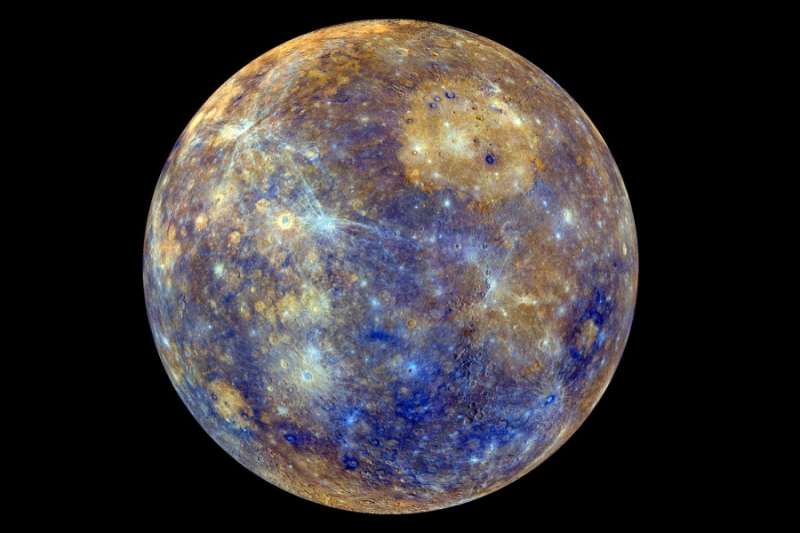Explanation: The colors of the solar system's innermost planet are enhanced in this tantalizing view, based on global image data from the Mercury-orbiting MESSENGER spacecraft. Human eyes would not discern the clear color differences but they are real none the less, indicating distinct chemical, mineralogical, and physical regions across the cratered surface. Notable at the upper right, Mercury's large, circular, tan colored feature known as the Caloris basin was created by an impacting comet or asteroid during the solar system's early years. The ancient basin was subsequently flooded with lava from by volcanic activity, analogous to the formation of the lunar maria. Color contrasts also make the light blue and white young crater rays, material blasted out by recent impacts, easy to follow as they extend across a darker blue, low reflectance terrain.
1999 2000 2001 2002 2003 2004 2005 2006 2007 2008 2009 2010 2011 2012 2013 2014 2015 2016 2017 2018 2019 2020 2021 2022 2023 2024 2025 |
Yanvar' Fevral' Mart Aprel' Mai Iyun' Iyul' Avgust Sentyabr' Oktyabr' Noyabr' Dekabr' |
NASA Web Site Statements, Warnings, and Disclaimers
NASA Official: Jay Norris. Specific rights apply.
A service of: LHEA at NASA / GSFC
& Michigan Tech. U.
|
Publikacii s klyuchevymi slovami:
Mercury - Merkurii
Publikacii so slovami: Mercury - Merkurii | |
Sm. takzhe:
Vse publikacii na tu zhe temu >> | |
